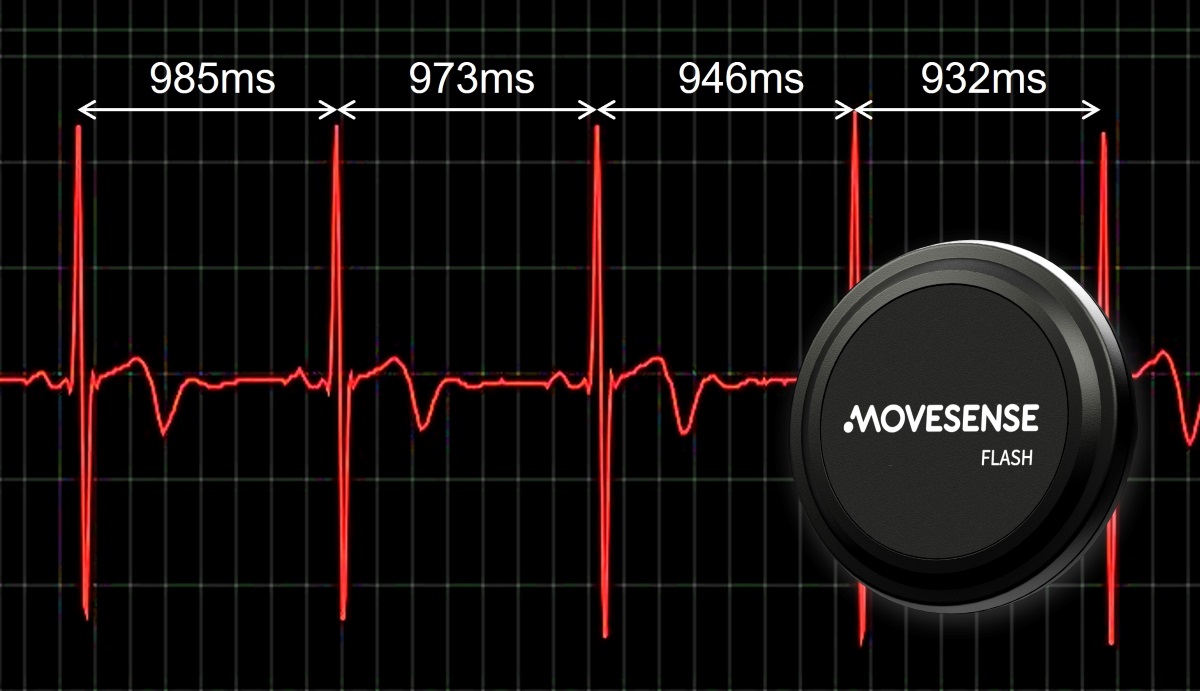
The newly launched Movesense Flash sensor is a unique tool for collecting heart rate interval data for existing heart rate variability (HRV) analysis applications and for developing new HRV solutions.
When used as a HRV recorder, its 128MB internal data storage provides an amazing 3000 hours (125 days) of capacity for beat-to-beat intervals (at an average heart rate of 90 bpm).
The independent data logging means that the wireless heart rate transmission can be switched off during recording, which minimizes the power consumption. Therefore, the Movesense Flash can operate up to 900 hours (37,5 days) in one go with one replaceable CR2025 battery.
The Movesense Flash’s long operating time combined with comfortable, unobtrusive wear make it an ideal tool for collecting long-term heart rate variability data. Open Movesense APIs, sample code and software libraries help developers integrate Movesense Flash with existing applications and develop new ones that use data recorded with it.
Why is HRV interesting?
Heart rate variability is a physiological phenomenon that manifests as a variation in the time interval between heartbeats.
In general, HRV is the result of the interaction of different regulatory mechanisms in the human body. These regulatory systems are related to various physiological processes and health conditions, which makes HRV a very interesting indicator of human health and performance.
The value of HRV in health and exercise science has been proven in numerous studies. Researchers have shown that HRV can be used in many ways for assessing and managing human health and performance, and new application areas for HRV are discovered frequently.
HRV is commonly used for monitoring and analyzing training load, stress, and recovery, including several solutions developed by Movesense customers such as Neuropeak Pro and Firstbeat Sports.
Most current solutions for collecting HRV data are based on live streaming of heart rate to a receiving device, e.g. a phone. Movesense Flash can collect data independently without a wireless connection or user interaction. This enables new solutions where the sensor is used as a standalone HRV recorder that stores beat-to-beat data to be downloaded and analyzed later.
How to measure HRV?
Reliable measurement of HRV requires accurate detection of time intervals between consecutive heartbeats during both rest and physical activity.
The golden standard for measuring beat-to-beat intervals is the detection of R-peaks and the time intervals of R-peaks from the electrocardiogram (ECG). An example of this is in the featured image of this article that shows an ECG graph measured with Movesense sensor and Movesense showcase app for iOS.
Movesense Flash has not yet been used in HRV related research projects to validate its accuracy. However, its heart rate measurement implementation is the same as in Movesense Medical, a reference device whose heart rate interval measurement accuracy has been proven in several scientific studies.
Many companies are providing excellent HRV analysis tools for different purposes. Heart rate interval data recorded with Movesense sensors can be processed with all of them.
For in-depth analysis needed in scientific research and new product development, we warmly recommend Kubios HRV Scientific that is a gold-standard heart rate variability analysis software for professional use.
To learn more about the features and usage of Movesense Flash, join our webinar on Dec 7th, 2023.
To start experimenting with Movesense Flash in your own project,
Views: 565
